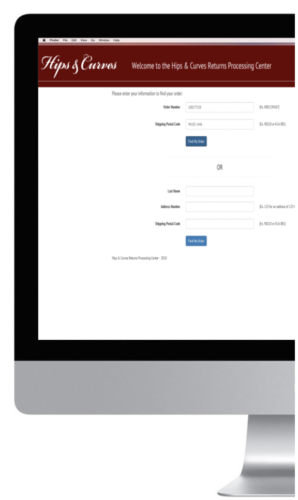Returns Processing Best Practices
Record-breaking ecommerce sales have become the norm this year. Reports show that ecommerce sales increased 3X in April and May, with activity slightly less but still strong in June and July (July numbers were almost double compared to late February). The “new normal” of ecommerce should remain stable in August and leading into to 4Q.
The unprecedented growth experienced in 2020 has had both positive and negative outcomes for some U.S. retailers. While customers have become accustom to making purchases online for practically any and all kinds of products, they’ve also become more confident in making returns for products they’ve bought online.
The State of Online Returns

According to a report published by Signifyd as part of their 2020 Consumer Sentiment Survey,
merchandise returns accounted for $309 billion in lost sales for U.S. retailers in 2019, with $41 billion of that loss coming from online sales. Some of the loss can be attributed to additional overhead needed for returns shipping and processing and the restocking of inventory.
Other interesting stats shared in the survey, which was conducted with over 2,000 online shoppers earlier this year, include:
- Nearly 60% of respondents said they carefully check a retailer’s return policy before they buy (other data shows this is especially the case with apparel and accessory purchases).
- Another one-third of respondents just assume they can return a product.
- 8% of survey respondents admitted to gaming the return policy system – like purchasing something with the intent to return it after use or keeping a product but blocking payment of it through their credit card company.
- 75% of respondents said a bad returns experience was enough reason to not buy from that retailer again.
- Today’s consumers want to be able to return a product for just about any reason – and 75% said they never feel guilt over making a return.
So, what do these numbers tell you? That shoppers pay attention to return policies and expect a great customer experience if they do end up returning an item.
That’s why now more than ever, continuing to invest in returns processing is essential to keeping your customers happy and returning. And the one of the best ways to do that is to use an RMA solution.
What is an RMA?

A Return Merchandise Authorization (RMA) system is a technology framework for managing returns. It’s the interface that communicates with customers throughout their entire returns cycle – giving retailers a more efficient, streamlined process and giving customers a much better returns experience.
What’s one of the best options to ensure you have a good RMA solution in place? Enlist the help of a third-party logistics (3PL) provider. Many 3PLs offer an RMA solution that they can integrate directly into ecommerce channels, giving customers the ability to make hassle-free, self-service returns.
PFC’s dynamic RMA portal has been in place for several years, with many of our customers using it as a value-added tool within their ecommerce platform. Because each customer handles returns differently, the portal is customized to their unique business needs.
What can an RMA do?
When a customer wants to make a product return, the RMA will initiate the process by emailing the customer a Merchandise Return Label (MRL) for shipping the item back. The RMA then tracks the return of the product back to the 3PL location, where the processing takes place.
Not all RMA systems are the same. A good RMA system will handle all of the steps involved in a returns management program:
- Updates to customer regarding return status
- Product inspection and verification
- Credit reconciliation
- Product disposition
- Repair and refurbishment
- Quality assurance
- Product re-packaging and re-stocking
- Recycling or disposal
- Online reporting on all return order data
Robust returns reporting is a powerful piece of the RMA system, allowing retailers to evaluate reasons for returns, identify potential fraudulent returns activities, and assess other pain points which might be causing frustration for customers and lost sales for retailers. With this valuable data, retailers can refine their program to exceed their business goals.
Enhancing the Customer Experience with Returns Processing

When it comes to product returns, the importance of customer satisfaction cannot be overstated. Outside of having a good RMA solution in place, there are proactive measures a retailer can take to ensure their customers are not left disappointed in their online shopping experience.
- Have a Clear Returns Policy
Make sure your returns policy is clearly identifiable and locatable within your site. Even better, make it easy for customers to make a return if needed. Don’t make them jump through hoops (a good RMA will make sure they don’t have to!).
- Include Detailed Product Info on Your Website
Returns are often the result of a customer just not getting what they envisioned – the old expectation vs. reality dilemma. Good product merchandising on a website goes a long way in shaping a buyer’s expectations of what an item is. Retailers that help buyers easily compare products by features, or between brands, will see fewer returns. Empower your customers to make well-informed purchasing decisions.
- Invest in Customer Service & FAQ’s
Having good customer support and providing answers fast when customers have them is important. The type of support you offer depends on the type of product you’re selling. But disappearing from the customer experience once a purchase is made is a rookie mistake with big consequences.
- Encourage Product Reviews
Contrary to what many retailers think, having product reviews on your site can improve sales and prevent returns. Savvy shoppers know there will always be reviews that are super critical or unrealistically positive. But in the middle is valuable feedback that can help sway uncertain shoppers to click the order button.
Contact PFC Fulfillment
Retailers that recognize the value of the entire product sales cycle and consumer experience, including returns processing, will stay ahead of the curve and keep their customers happy. Contact PFC today to learn more about our solutions that deliver client results.

